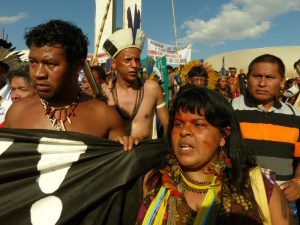Q1: How does social entrepreneurship function in helping underprivileged people to mobilize their socioeconomic statuses?
A1: In the film, workers of Jardim Gramacho participated in an art project with a supervisor, utilizing recycles and litters to create portraits of its members. After they finished the project, the pieces created through the art collaboration were auctioned and sold at a high price, which the profits were distributed to the workers of Jardim Gramacho. Here, social entrepreneurship played a crucial role in helping those in need to get back on their feet or start a new chapter in their lives with the income they earned from selling the art pieces. Although the money wasn’t significantly large, it was sufficient enough to support the workers in pursuing their dreams. Brazil has one of the largest gaps between the rich and poor in the world. However, it is almost impossible to allocate monetary resources directly to underprivileged people in Brazil, but Wasteland reveals how those in need can be financially supported for minimum investment to pursue their visions.
Q2: How does Wasteland reveal the social construction of Brazil?
A2: During watching this film, there were several features I noticed that reflect the social construction of Brazil. Those working at Jardim Gramacho were predominantly non-whites, whereas the film director (or the project supervisor) was white. Similarly, the film captures a scene at the auction where the ones purchasing art works were, again, white. From my understanding, the auction represented a rich high urban social life that was practiced and enjoyed by white Brazilians. Moreover, a female worker at Jardim Gramacho (I forgot her name) says in the film that she doesn’t want to go back to the garbage land, but she must go back to support her children and mother. This was inevitable for that Brazilian woman because working there was the only option in the society she can utilize to financially sustain her life. This further reflects how, in Brazil, social construction is deeply systematized that those in need possess limited opportunities and resources within the society.

